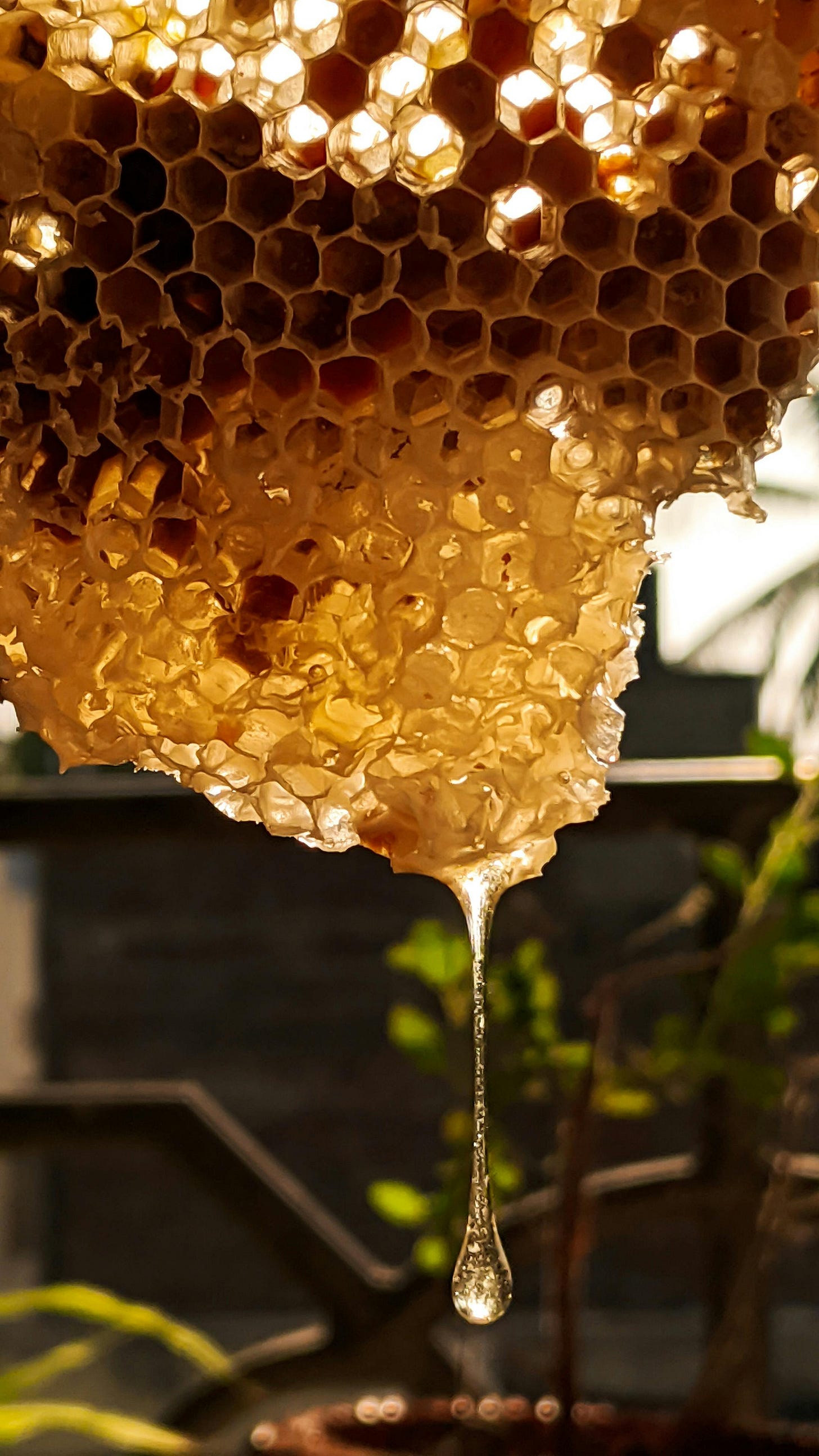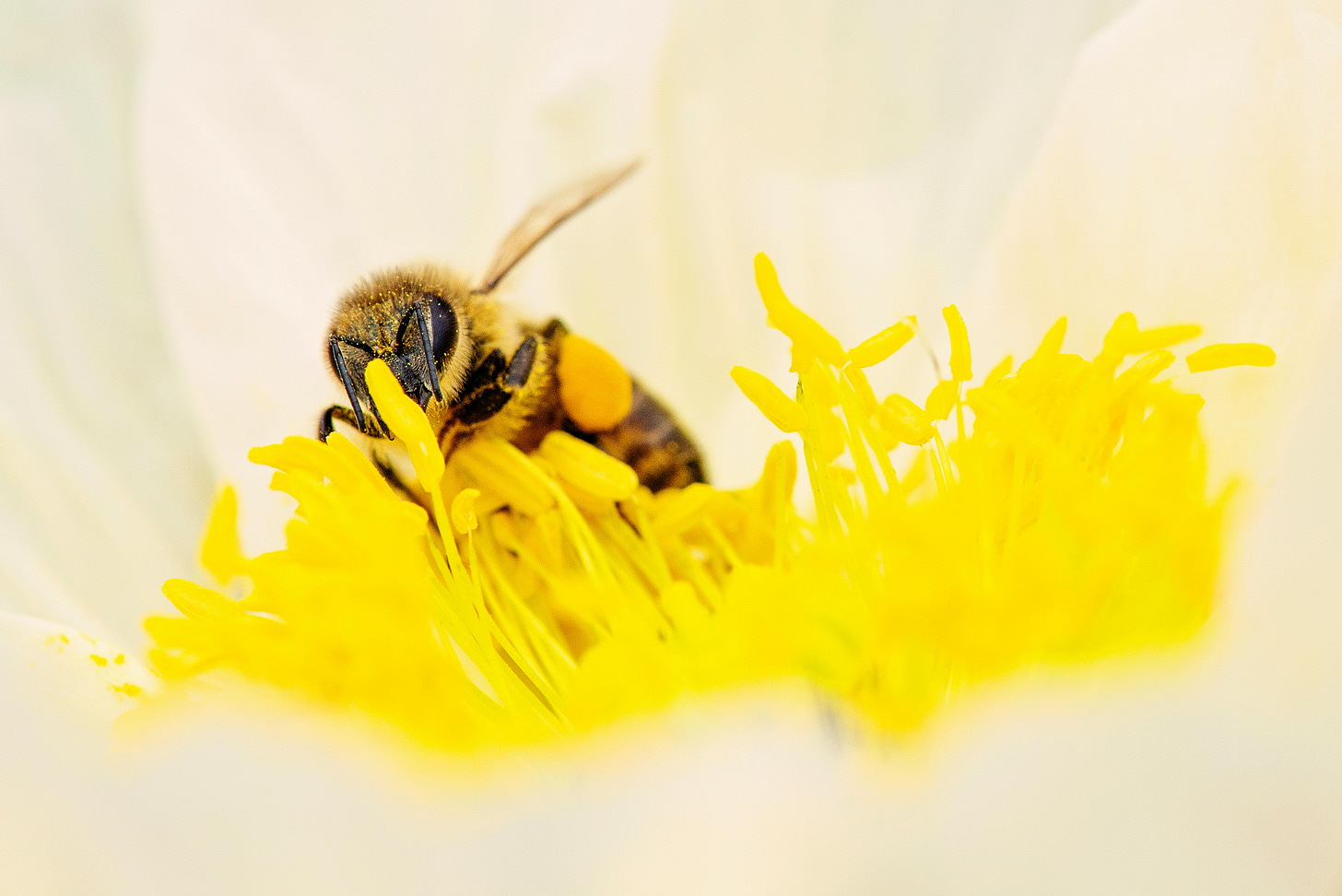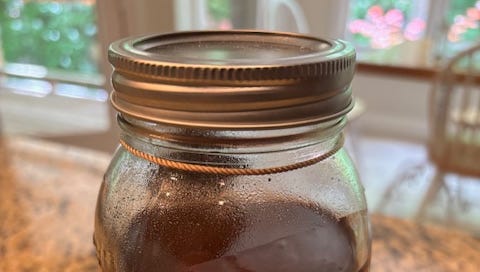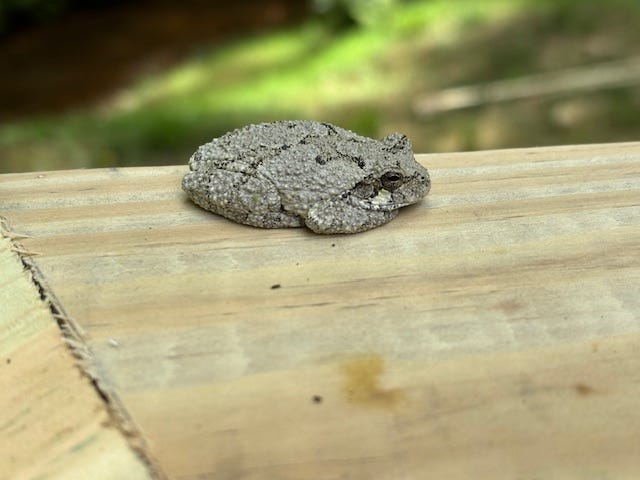There aren’t many things in nature as sweet as honey. Perhaps the nectar of a honeysuckle flower, pinched off at the base and dropped tantalizingly on the tongue, one drop at a time could compete. But most fruit – melons, apples, berries – just don’t seem to come close to the concentrated sweetness of honey.
And it’s made by bugs! We eat liquid produced by insects, and we love it. It’s kind of weird, when you think about it.
Clearing out my dad’s apartment a few weeks ago, I came across a huge mason jar of sweet honey. At first, I worried that, like much of the food in his apartment, it had spoiled. But when I did a quick internet search, I discovered that honey doesn’t go bad. Like… ever.
Why doesn’t honey spoil?
How is it possible that a food source that’s usually produced in the trunk of a tree deep in a forest doesn’t go bad?

For that matter, how do bees make honey in the first place? I know bees are critical pollinators – but are they using the pollen to make the honey? Suddenly I realize I am embarrassingly ill-informed when it comes to how this process works.
Honeybees, it turns out, use pollen as a source of protein, and it’s primarily used to feed their larvae. Pollen is collected almost as an afterthought in little “pollen baskets” on bees’ hind legs as they go out to forage for their primary food source – nectar. It’s the nectar deep in the flower that they’re scrounging for as they bury their heads into a flower – that same nectar that is so delicious for human children to drink from honeysuckle flowers.
Bees suck up the nectar and store it in a special “honey stomach” for transporting back to the hive. If she (and they’re all she bees) gets hungry during her foraging, the bee can divert some of the nectar to her own digestive system, but mostly she uses the honey stomach as a suitcase for transport. As she carries it, enzymes in the stomach begin breaking the nectar down into simple sugars and reducing the water content.

When she arrives back at the hive, she passes the honey in her stomach off to a house bee. The forager bee literally regurgitates the nectar and passes it, mouth to mouth, to the next bee. This process reduces the water content of the nectar even further.
And that turns out to be a critical element of why honey doesn’t spoil – flower nectar is around 70% water, but honey contains only 17% water, less than is needed to sustain the bacteria and molds that lead to spoilage. As nectar is passed from forager bee to house bee to other house bees, the water content is reduced. But it’s also further reduced when house bees fan their wings over the honey after it’s been deposited in the honeycomb and before it’s been sealed with wax. You can see that in action in this short video:
It generally takes around three days for the nectar to dehydrate enough for the bees to cap off the honeycomb cells. In fact, most of the buzzing sound you hear around bee hives isn’t the bees flying in and out, but the fanning of the house bees as they dry out the nectar.
Honey is also acidic, with a pH of 4, about the same as tomato juice and some citrus fruits. This acidity makes it an unfriendly host for bacteria and molds. Additionally, honey contains small amounts of hydrogen peroxide produced by enzymes the bees add to the nectar. This means honey is actually antibacterial and can be used to dress and heal wounds! Honey can help heal burns and decrease inflammation from a wide range of injuries.
It may be these healing properties, or perhaps just its sweet taste, that caused honey to be left in King Tut’s tomb along with other treasures when he died. Rumor is that archeologists tasted the 3,000-year-old honey and found it to be just as delicious as today’s honey, though I’ve not been able to verify that.
Regardless, honey lasts an indefinite amount of time if kept in a dry place. It’s best to not store it in plastic containers over time, which can cause the honey to oxidize and crystallize. Even that doesn’t ruin the honey, however – just warm it slowly in hot water to return it to a liquid state.
So there you have it – honey, despite being essentially a combination of flower water and bee spit, lasts perhaps forever and has amazing healing properties. Nature never ceases to amaze.
Weird Nature:
(click to watch)








I'd previously seen honey compared to bee vomit. Your comparison to bee spit makes it sound so much more palatable!
Simply amazing info. Does modern food processing and packaging ruin its "forever" qualities?